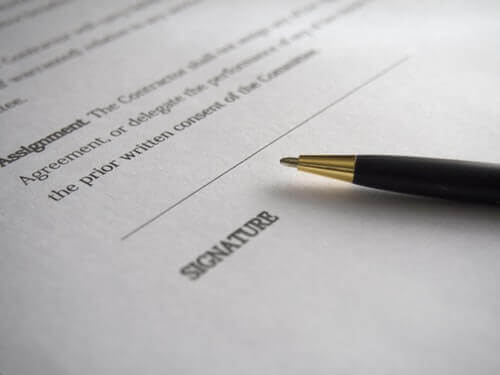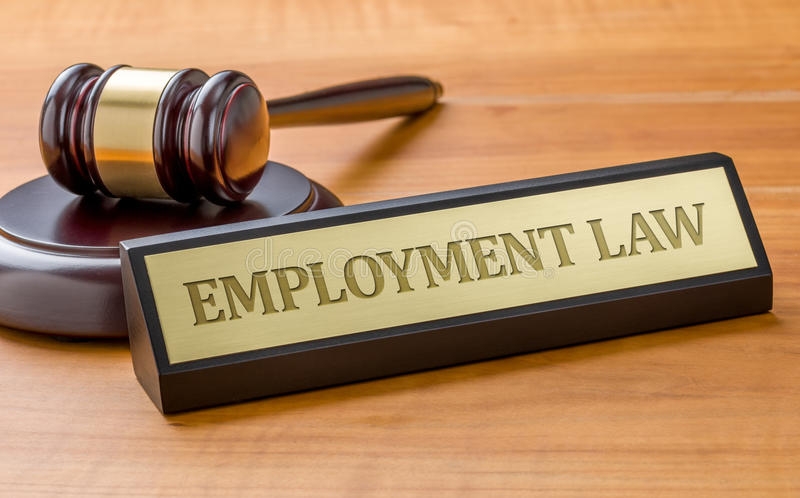In order to ensure that conflict in the workplace is resolved efficiently and with minimal disruption, it’s necessary to put comprehensive procedures in place. One such procedure should cover the way in which an employee grievance is lodged and handled. Here, we take a look at everything you need to know to ensure grievances are processed in a responsible, just, and satisfactory manner.
 As with all conflict-resolution processes, it’s good practice to have a written policy in place to guide members of staff through the procedure. Not only does formalising the process ensure transparency, but it also encourages consistent handling of grievances and prevents a business from being accused of discriminatory behaviour.
In the case of grievance processes, businesses are required to draw up a dedicated policy and make it readily available to members of staff. This is likely to mean including it in the staff handbook that’s provided to new employees when they join the organisation. It is also a good idea to include information pertaining to the grievance process on the business intranet or staff portal.
In terms of content, the policy could include:
As with all conflict-resolution processes, it’s good practice to have a written policy in place to guide members of staff through the procedure. Not only does formalising the process ensure transparency, but it also encourages consistent handling of grievances and prevents a business from being accused of discriminatory behaviour.
In the case of grievance processes, businesses are required to draw up a dedicated policy and make it readily available to members of staff. This is likely to mean including it in the staff handbook that’s provided to new employees when they join the organisation. It is also a good idea to include information pertaining to the grievance process on the business intranet or staff portal.
In terms of content, the policy could include:
 Employee grievances come in many shapes and sizes. The severity of the grievance is also often subjective. That is to say, what constitutes a major breach of conduct for one individual, may be a minor quibble to another. However, this “subjectivity” does not mean that an employer is free to prioritise their own opinion when making a judgement. Due process, company policy, and compassion for employees must always come first. Instead, recognition of the subjectivity of some grievances should help employers understand that these conflicts often occur in something of a “grey area” and that, as a result, their approach needs to be nuanced.
One of the simplest ways of developing such an approach is by beginning the grievance process with an informal discussion. Such a discussion can be used to discuss the grievance and gauge its severity and ascertaining whether the employee is agreeable to it being resolved without the full grievance process into motion.
Some grievances can be handled informally and will require nothing more than a few words to resolve. In such a case, launching the full grievance process could be to exaggerate the severity of the problem and make a mountain out of a mole-hill. However, businesses walk a fine line when taking such action and should generally not do so without the agreement of the aggrieved employee. To do so, against their wishes, could result in accusations that the business has not processed the complaint in the correct manner and expose them to the possibility of legal challenges.
Employee grievances come in many shapes and sizes. The severity of the grievance is also often subjective. That is to say, what constitutes a major breach of conduct for one individual, may be a minor quibble to another. However, this “subjectivity” does not mean that an employer is free to prioritise their own opinion when making a judgement. Due process, company policy, and compassion for employees must always come first. Instead, recognition of the subjectivity of some grievances should help employers understand that these conflicts often occur in something of a “grey area” and that, as a result, their approach needs to be nuanced.
One of the simplest ways of developing such an approach is by beginning the grievance process with an informal discussion. Such a discussion can be used to discuss the grievance and gauge its severity and ascertaining whether the employee is agreeable to it being resolved without the full grievance process into motion.
Some grievances can be handled informally and will require nothing more than a few words to resolve. In such a case, launching the full grievance process could be to exaggerate the severity of the problem and make a mountain out of a mole-hill. However, businesses walk a fine line when taking such action and should generally not do so without the agreement of the aggrieved employee. To do so, against their wishes, could result in accusations that the business has not processed the complaint in the correct manner and expose them to the possibility of legal challenges.
 In order to fully understand the nature of the grievance, the individual handling the complaint should meet with the aggrieved employee in a formal setting. This allows a comprehensive discussion to take place and gives the aggrieved employee an opportunity to describe their position and the individual hearing the complaint to ask a number of important questions.
These questions should include:
In order to fully understand the nature of the grievance, the individual handling the complaint should meet with the aggrieved employee in a formal setting. This allows a comprehensive discussion to take place and gives the aggrieved employee an opportunity to describe their position and the individual hearing the complaint to ask a number of important questions.
These questions should include:
Guarantee Grievances Get Handled Correctly by Creating a Dedicated Policy
 As with all conflict-resolution processes, it’s good practice to have a written policy in place to guide members of staff through the procedure. Not only does formalising the process ensure transparency, but it also encourages consistent handling of grievances and prevents a business from being accused of discriminatory behaviour.
In the case of grievance processes, businesses are required to draw up a dedicated policy and make it readily available to members of staff. This is likely to mean including it in the staff handbook that’s provided to new employees when they join the organisation. It is also a good idea to include information pertaining to the grievance process on the business intranet or staff portal.
In terms of content, the policy could include:
As with all conflict-resolution processes, it’s good practice to have a written policy in place to guide members of staff through the procedure. Not only does formalising the process ensure transparency, but it also encourages consistent handling of grievances and prevents a business from being accused of discriminatory behaviour.
In the case of grievance processes, businesses are required to draw up a dedicated policy and make it readily available to members of staff. This is likely to mean including it in the staff handbook that’s provided to new employees when they join the organisation. It is also a good idea to include information pertaining to the grievance process on the business intranet or staff portal.
In terms of content, the policy could include:
- Who the employee should contact if they have a grievance
- How this person should be contacted
- Establish a schedule and time limits for the separate stages of the grievance process
- Name a second contact through whom a grievance can be lodged. This ensures that those with a grievance that involves the primary contact or who don’t feel comfortable communicating their grievance to that individual, aren’t excluded from the process
- Explain the grievance process and detail what it entails
- Explain how an appeal against a grievance decision can be lodged
Cover Yourself with a Comprehensive Paper Trail
If a business’ judgement or actions are ever called into doubt, the best way to satisfactorily justify their decision making is usually by referring to evidence. Without a paper trail, businesses will often have no proof that they followed the correct procedures, that they behaved in an appropriate manner, or that they reached their conclusion for the right reasons. In other words, without written documentation of the entire grievance process, they are extremely vulnerable to legal challenges that could cause considerable financial and reputational damage. Consequently, it’s essential that every action and reaction within the grievance process is recorded. From the moment a complaint is made to the end of the appeal process, those in charge of the grievance process must ensure written evidence is compiled. This written evidence should include:- Records of all investigatory meetings and formal hearings related to the grievance,
- Times, dates, and details of the nature of all communications and interactions pertaining to the grievance or grievance process
- Witness statements or records of interviews of all individuals who provide evidence relating to the grievance
- Any and all information that is used to justify the employer’s decision
Ensure the Right Response by Gauging the Severity of the Employee Grievance
 Employee grievances come in many shapes and sizes. The severity of the grievance is also often subjective. That is to say, what constitutes a major breach of conduct for one individual, may be a minor quibble to another. However, this “subjectivity” does not mean that an employer is free to prioritise their own opinion when making a judgement. Due process, company policy, and compassion for employees must always come first. Instead, recognition of the subjectivity of some grievances should help employers understand that these conflicts often occur in something of a “grey area” and that, as a result, their approach needs to be nuanced.
One of the simplest ways of developing such an approach is by beginning the grievance process with an informal discussion. Such a discussion can be used to discuss the grievance and gauge its severity and ascertaining whether the employee is agreeable to it being resolved without the full grievance process into motion.
Some grievances can be handled informally and will require nothing more than a few words to resolve. In such a case, launching the full grievance process could be to exaggerate the severity of the problem and make a mountain out of a mole-hill. However, businesses walk a fine line when taking such action and should generally not do so without the agreement of the aggrieved employee. To do so, against their wishes, could result in accusations that the business has not processed the complaint in the correct manner and expose them to the possibility of legal challenges.
Employee grievances come in many shapes and sizes. The severity of the grievance is also often subjective. That is to say, what constitutes a major breach of conduct for one individual, may be a minor quibble to another. However, this “subjectivity” does not mean that an employer is free to prioritise their own opinion when making a judgement. Due process, company policy, and compassion for employees must always come first. Instead, recognition of the subjectivity of some grievances should help employers understand that these conflicts often occur in something of a “grey area” and that, as a result, their approach needs to be nuanced.
One of the simplest ways of developing such an approach is by beginning the grievance process with an informal discussion. Such a discussion can be used to discuss the grievance and gauge its severity and ascertaining whether the employee is agreeable to it being resolved without the full grievance process into motion.
Some grievances can be handled informally and will require nothing more than a few words to resolve. In such a case, launching the full grievance process could be to exaggerate the severity of the problem and make a mountain out of a mole-hill. However, businesses walk a fine line when taking such action and should generally not do so without the agreement of the aggrieved employee. To do so, against their wishes, could result in accusations that the business has not processed the complaint in the correct manner and expose them to the possibility of legal challenges.
Build a Solid Case by Seeking Out All of the Facts
As with any investigation, it’s absolutely essential that all the facts are collected and considered before a decision is made. To jump to a conclusion before all the evidence has been gathered is to limit your chances of making the right decision. It also puts the business in a position where it could be forced to backtrack or face a legal case. Consequently, the individual responsible for handling the grievance should aim to ensure that they have a complete picture of the series of events or circumstances that resulted in an employee feeling aggrieved. If the investigator is to acquire all of the facts, they must:- Launch an investigation as quickly as possible. Delaying the start of the investigation only increases the likelihood that individuals’ memories of events will be incomplete or inaccurate
- Talk to any and all employees who could provide useful information pertaining to the grievance
- Allow individuals involved in the grievance (those accused or present at the time) to submit their own evidence in order to defend themselves and their actions
- Ensure that the investigation is handled delicately and in a way that protects vulnerable individuals. Individuals who provide evidence may need to have their names or identifying details omitted during conversations. However, the accused should be provided with sufficient information to defend themselves
Understand the Cause of the Grievance by Meeting with the Employee
 In order to fully understand the nature of the grievance, the individual handling the complaint should meet with the aggrieved employee in a formal setting. This allows a comprehensive discussion to take place and gives the aggrieved employee an opportunity to describe their position and the individual hearing the complaint to ask a number of important questions.
These questions should include:
In order to fully understand the nature of the grievance, the individual handling the complaint should meet with the aggrieved employee in a formal setting. This allows a comprehensive discussion to take place and gives the aggrieved employee an opportunity to describe their position and the individual hearing the complaint to ask a number of important questions.
These questions should include:
- How does the aggrieved view the nature of their complaint?
- How does the aggrieved believe the grievance can be resolved?
- What outcome does the aggrieved desire from this process?
- What steps does the aggrieved believe can be taken to prevent such a grievance occurring again in the future?
Ensure the Integrity of the Process by Communicating the Outcome in the Right Way
It doesn’t matter whether or not you come to the right decision if, at the end of the process, you opt to communicate the result in an inappropriate manner. Though your decision will be evidence-based and in keeping with the rules and regulations that govern employee behaviour in the workplace, it’s highly likely that your conclusion is going to make at least one of the parties involved feel as if the wrong decision has been made. This could result in a great deal of anger and frustration on their part. In order to minimise this frustration and to ensure that the business isn’t accused of acting in an unprofessional, indifferent, or unjust manner, the following guidelines should be followed:- Communicate the decision both in writing and through a face-to-face meeting and discussion. Utilising only one of these methods may not be sufficient. Delivering the decision in writing alone can be perceived as cold and heartless, while failure to communicate the result in writing constitutes poor record keeping
- The decision should be communicated as quickly as is reasonably possible
- The decision should be explained as thoroughly as is practical
- If the grievance is upheld, the aggrieved employee should be informed as to what action is to be taken as a result
- The aggrieved employee should be informed, in writing, of their ability to appeal the decision
Allow for Errors by Making an Appeals Process Readily Available
The result of the grievance process can have enormous implications for those involved. As with any decision of this gravity, it’s important that aggrieved employees have recourse to an appeals process. An appeals process establishes a safeguard and allows for a second opinion to be given on the grievance. Essentially, it is the recognition that mistakes can be made, that new information can come to light, and that judgements are often subjective and require more than one perspective. A functional appeals process will be based on the following characteristics:- It will be well publicised and employees will be made aware that an appeals process is available
- Appeals should be based upon a written policy that details the time limit for an appeal to be lodged, how long the process may take and how it can be initiated,
- Appeals shouldn’t be handled by the same individual who judged the initial grievance. Whenever possible, they should be processed by a more senior figure
- A distinction should be made between ‘reviews’ and ‘rehearings.’ A review involves revisiting the existing evidence to ensure the correct decision was made. A rehearing involves hearing the grievance afresh. It is typically used when there has been a procedural error in the initial process
- Individuals involved in the grievance process will be made aware of the result of the appeal in an appropriate manner.
Make the Most of the Resources at Your Disposal
Finally, those who handle grievances should make the most of any and all resources available to them. By taking advice from informed organisations and individuals, they’ll be better equipped to reach accurate and fair decisions, ensure that the business acts in a way that respects their legal responsibility, and that the employer protects employees to the best of their ability. There are a considerable number of resources available, they include:- The ACAS Code of practice on disciplinary and grievance procedures
- The gov.uk website’s extensive guidelines
What Next?
An efficient employee grievance process is based upon transparency and ease of access. All employees should understand how to lodge a grievance and those responsible for processing it should be able to rely on a carefully constructed, written policy to guide them. By following the steps listed above, all businesses will be able to implement procedures that help protect the organisation from legal challenges, whilst also ensuring that employees are protected and their concerns aired and judged in an impartial and just way.If you would like more information on handling employee grievances, please contact our expert Employment Law team today for free, no-strings advice: CALL 033 33 215 005 | Email Us




